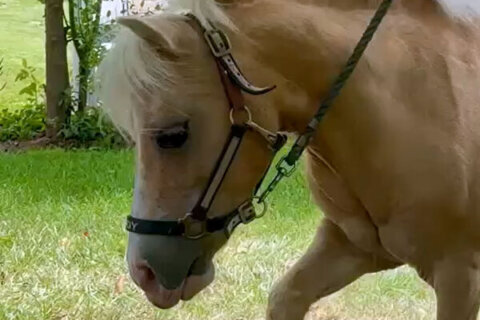As the Smithsonian National Zoo’s giant pandas prepare to depart later this month, Zoo staff are speaking on the conservation successes they have produced with pandas Tian Tian and Mei Xiang over the past two decades.
Pandas producing offspring can sometimes feel like an impossible mission for zoo officials. That’s because they have an unbelievably short breeding season.
“The female can conceive between 12 and 18 hours only,” said Pierre Comizolli, a reproductive physiologist at the National Zoo. “That window of time really got more and more precise and specific over time because we added more data to observation.”
And that is for the entire year. The breeding season is usually sometime between March and May, but Comizolli told WTOP that they have observed it as early as January, always keeping staff on their toes in terms of when they can attempt to produce another cub.
Back in 2004, veterinarians started trying to breed Mei Xiang and Tian Tian naturally, but “there were some kind of issues of compatibility,” according to Comizolli.
“Soon after, we decided that artificial insemination was probably the way to go,” Comizolli said.
Using that method, the Zoo successfully helped Mei Xiang produce numerous cubs, four of which survived into adulthood.
One of the crowning achievements was the birth of Xiao Qi Ji in 2020, which made Mei Xiang the oldest giant panda in the U.S. to give birth.
The four cubs have been instrumental for adding to the panda population in captivity.
“Back in the ’90s, there were probably around 120 pandas in breeding centers in China, all around the world,” Comizolli told WTOP, adding that there were well over 500 now.
But the captive pandas had poor genetic diversity, leading to a lot of health issues with their offspring.
Comizolli said Tian Tian and Mei Xiang are a good genetic match.
“It’s not only the number of panda cubs that we produced — that is important, but it’s also the genetic quality to make sure that we preserve and we maintain genetic diversity that will help really the population to thrive in the future.”
The pandas will be leaving the National Zoo in mid-November, according to the zoo’s director. After their departure, their indoor exhibit will see massive upgrades over the next 8 to 10 months.







